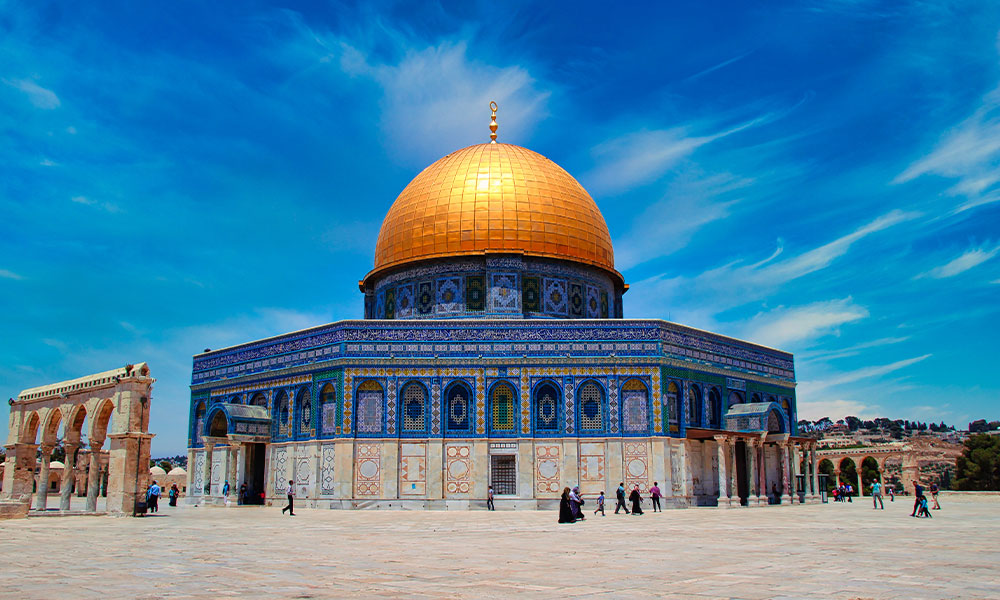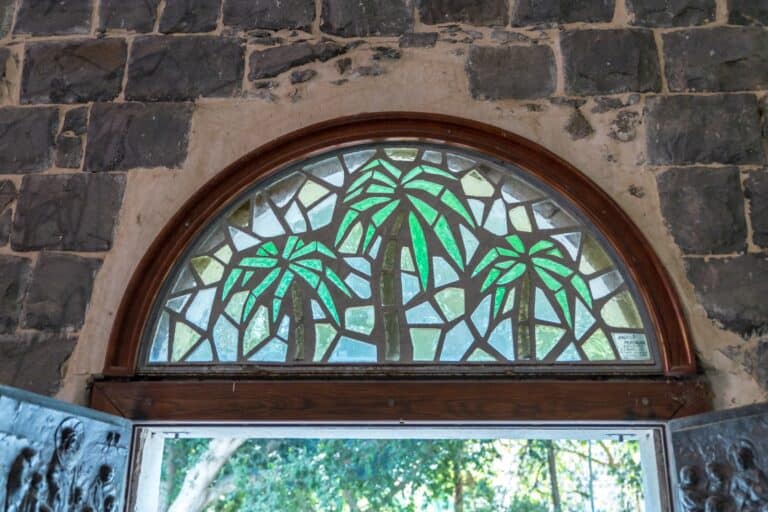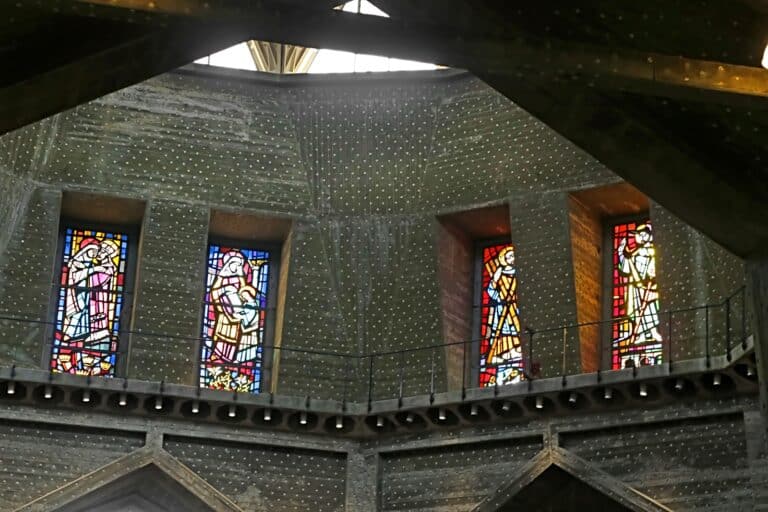Stained-glass windows adorn places of worship for all three monotheistic religions, and their beauty is peaceful and inspiring.
Israel is home to endless beautiful architecture, from majestic ancient remains and sites of utmost religious importance to Tel Aviv’s White City and ever-expanding skyscraper skyline.
But sometimes, the beauty is in the details – in the ceilings, floors, furniture, or, as in our case, windows.
Stained-glass windows were first produced back in the 12th century in Europe and have since spread all over the world. They are noted for their intricacy, capacity to tell a story and the color and ambience that they add to the buildings they grace.
We have gathered a collection of the most stunning stained-glass windows in the country. We hope you find them peaceful and inspiring.
Chagall Windows, Hadassah University Medical Center Jerusalem
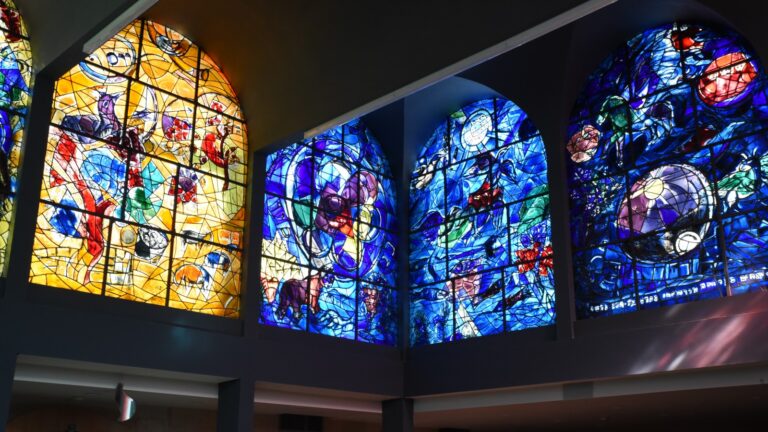
There is absolutely no way to discuss stained glass in Israel without first of all paying tribute to the Chagall Windows that adorn the Abbell Synagogue at Hadassah Medical Center in Jerusalem’s Ein Kerem neighborhood.
Created by the famous Russian-French artist Marc Chagall, who worked on the piece for two years, the 12 stained-glass windows represent the 12 tribes of Israel and are each 11 feet high and eight feet wide. Each of the windows has a predominant color, and they all feature motifs such as flowers, fish and animals.
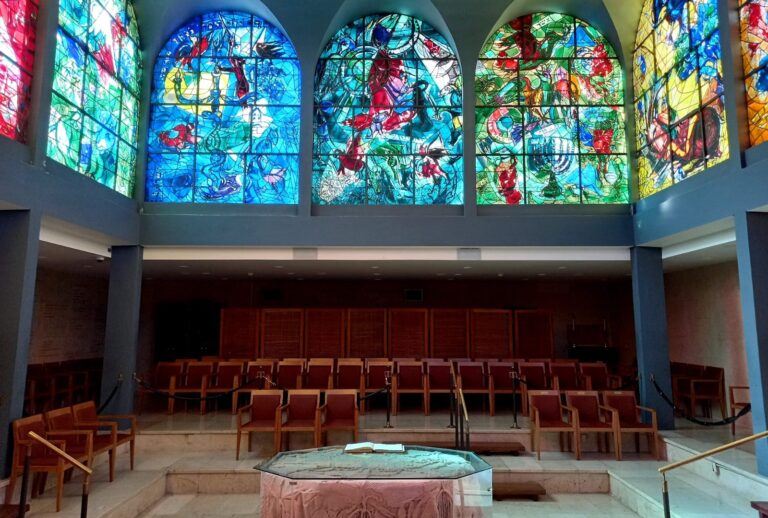
The Great Synagogue, Jerusalem
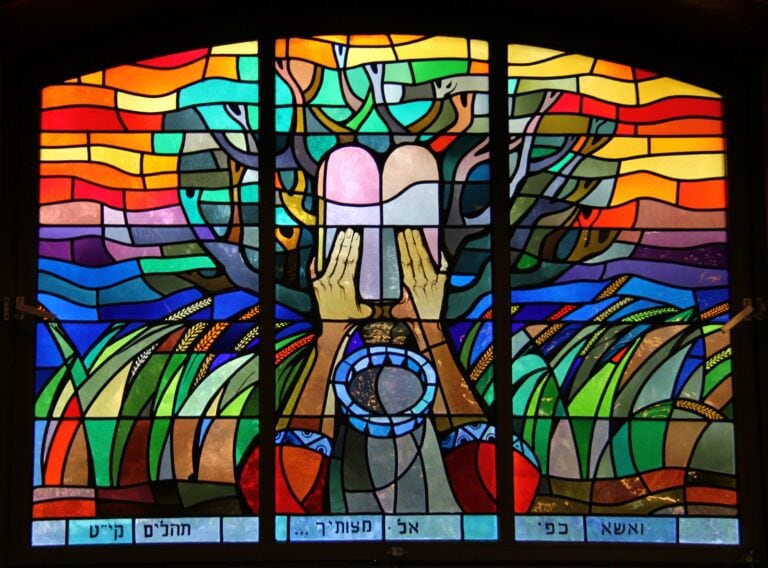
The Great Synagogue located in downtown Jerusalem that was inaugurated in 1982 is probably one of the fanciest synagogues in Israel and has the stained-glass windows to prove it.
The multi-story glass windows were created by artist Régine Heim, and shine a beautiful red, purple and yellow against the sun, depicting numerous paintings and verses. Among the congregation that enjoys the spectacular view one can count Israel’s political and religious leaders, who no doubt attend the synagogue for its convenient, central location, overall magnificence and beautiful interiors.
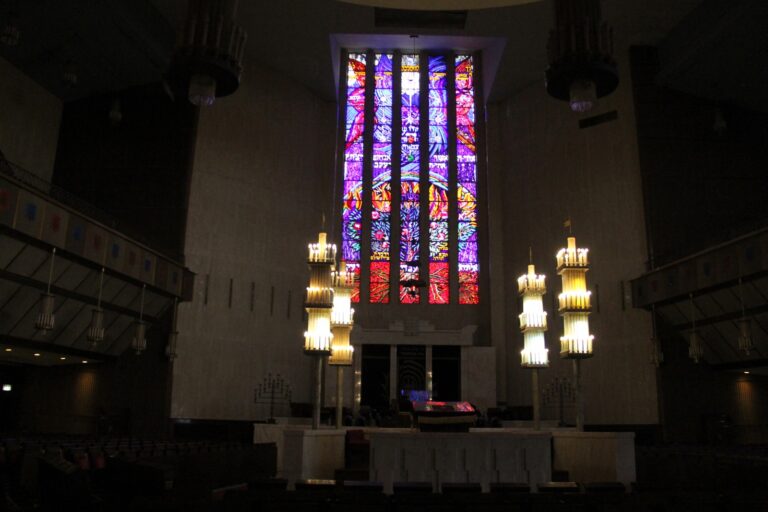
Immanuel Church, Jaffa
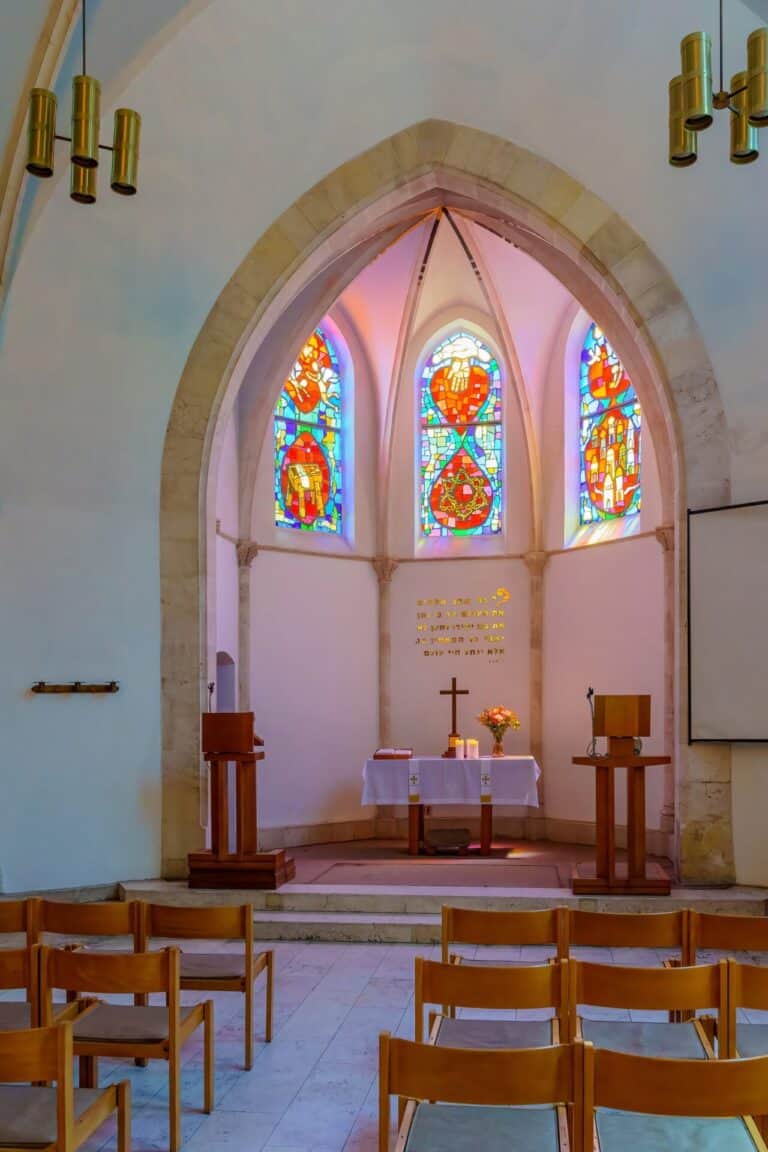
Immanuel Church resides at the heart of the picturesque American Colony area of Jaffa. The founders laid the cornerstone in 1898 and the church was finished by 1904. It has since been serving different Protestant denominations.
The stained-glass windows, added during a renovation in the 1970s, were created by Norwegian artist Victor Sparre. They depict the birth of Jesus, God’s love and the Holy Spirit and the angels. These windows can be admired freely.
Al Aqsa Mosque
Al Aqsa Mosque in Jerusalem’s Old City is the third holiest site in Islam and is believed to be the destination of the Prophet Muhammad’s Night Journey to “the furthest mosque,” from which the place gets its name.
The mosque is beautifully and intricately decorated according to the rules and customs of Islamic art. It boasts no less than 121 stained-glass windows from the Abbasid and Fatimid eras that add to the overall magnificence of the site.
The Pyramid Synagogue, Beersheba
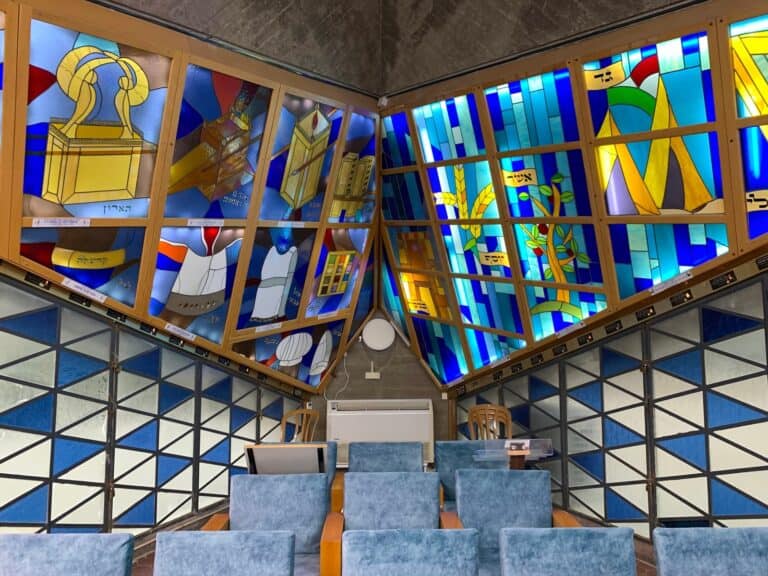
The Pyramid Synagogue must be one of the kookiest-looking synagogues in Israel, built in the 1980s to serve the city’s Iraqi Jewish community. The Brutalist-style, pyramid-shaped building can hold some 250 worshippers.
The synagogue’s stained-glass windows, like the Chagall Windows, showcase the 12 tribes of Israel, albeit in a more modern style, and their positioning at an angle (this is a triangular building, after all) and colorful surroundings make for an interesting perspective.
The Cenacle, Jerusalem
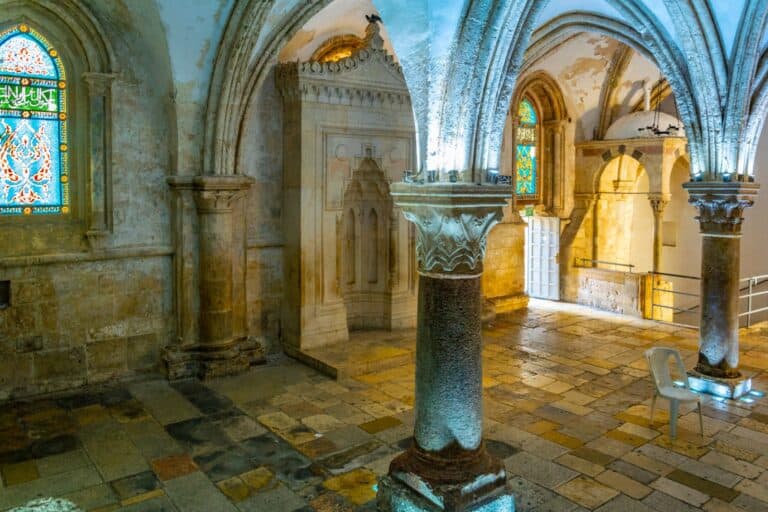
The Cenacle, or Room of the Last Supper, atop Jerusalem’s Mount Zion, is part of a building deeply steeped in the history of the three main religions of the Land of Israel.
Considered in Christian tradition to be the location of Jesus’ last supper with his apostles, the smallish room is above the place considered by Jewish tradition to be the tomb of the biblical King David, and for years served as a mosque under Ottoman rule – as can be evidenced by the mihrab, or niche, in the wall next to the beautiful stained-glass windows.
The juxtaposition of the two elements is an amazing manifestation of the way in which Jerusalem is meaningful to so many people around the world and makes it a special stop on any visit to the Old City.
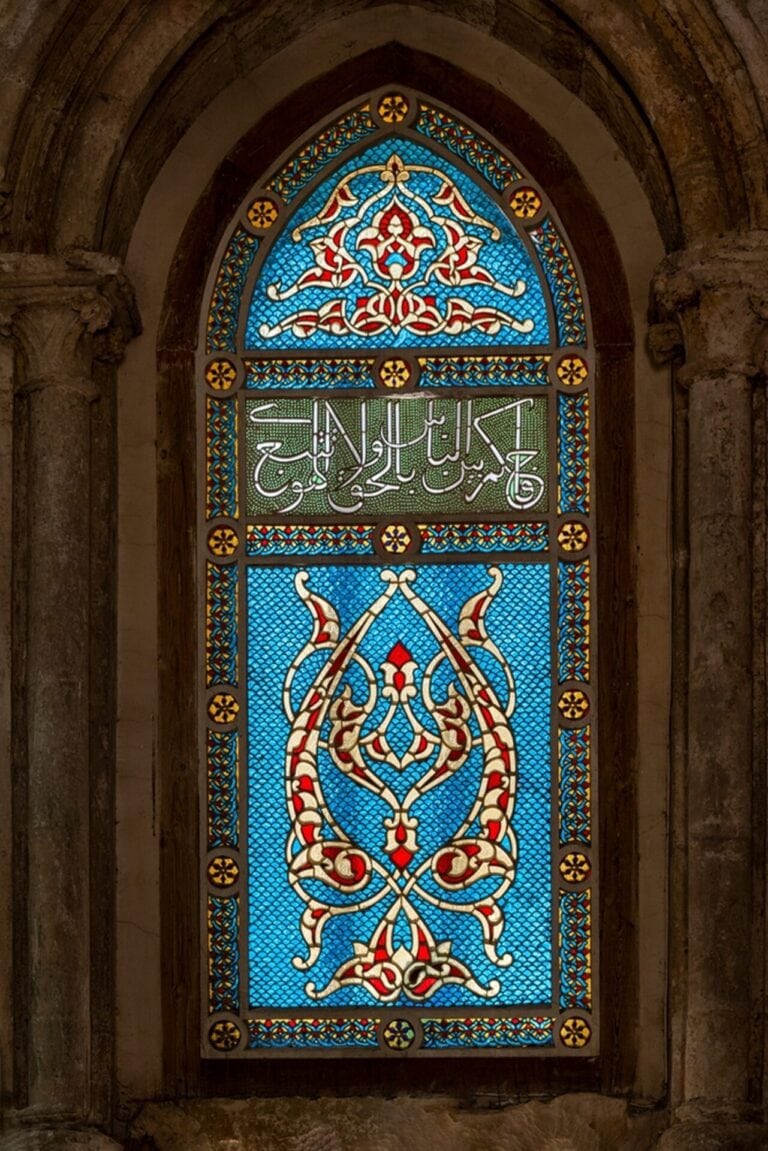
Stella Maris, Haifa
The Stella Maris Monastery on Mount Carmel in Haifa has got to be one of the prettiest locations in Israel, both inside and out. With beautiful gardens and a sea view, this 19th century building — the latest in a series of monasteries built at the site for the Carmelite order — also boasts some seriously gorgeous decorations.
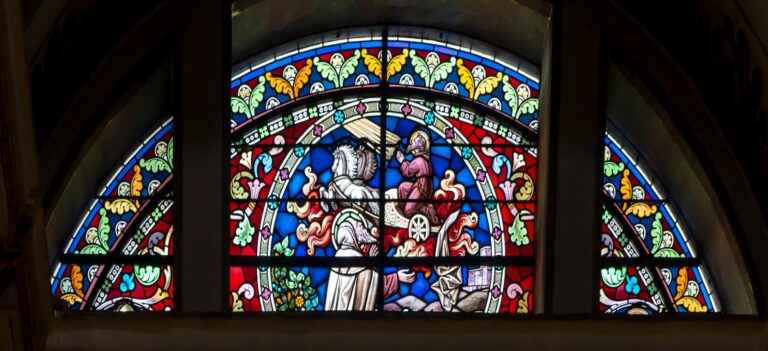
The monastery, the latest iteration of churches that were destroyed throughout history, sits atop what is believed to be the cave of the Prophet Elijah. As such, there’s a beautiful and intricate stained-glass window depicting Elijah’s ascension to the heavens. The church is open to the public daily, and very much worth a visit.
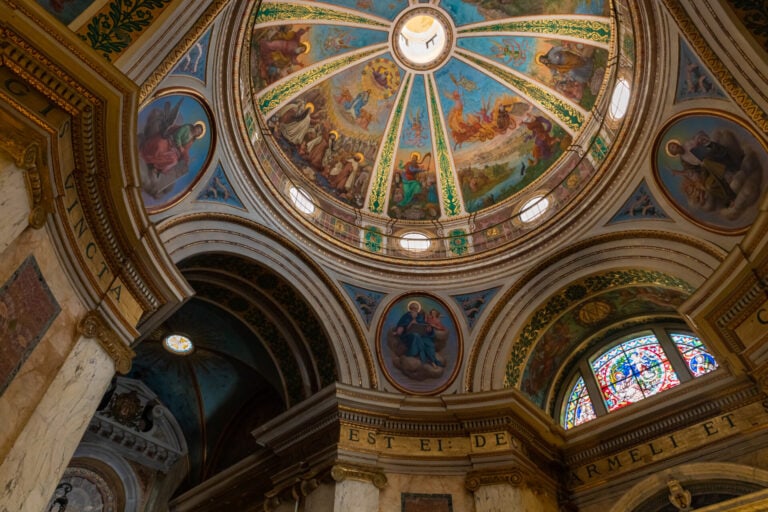
Church of Saint Peter in Gallicantu, Jerusalem
The Church of Saint Peter in Gallicantu is dedicated to the story of the Denial of Peter and is located just outside Jerusalem’s Old City walls. The church building itself is rather new, built in the 1920s and massively renovated in the 1990s, but stands atop the site of three previous churches, the first of which was erected back in the fifth century.
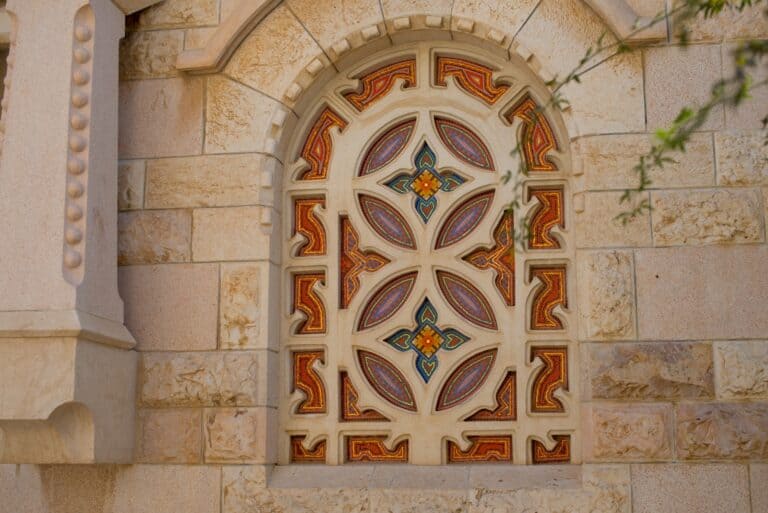
The Church of Saint Peter in Gallicantu is dedicated to the story of the Denial of Peter and is located just outside Jerusalem’s Old City walls. The church building itself is rather new, built in the 1920s and massively renovated in the 1990s, but stands atop the site of three previous churches, the first of which was erected back in the fifth century.
Dome of the Rock, Jerusalem
